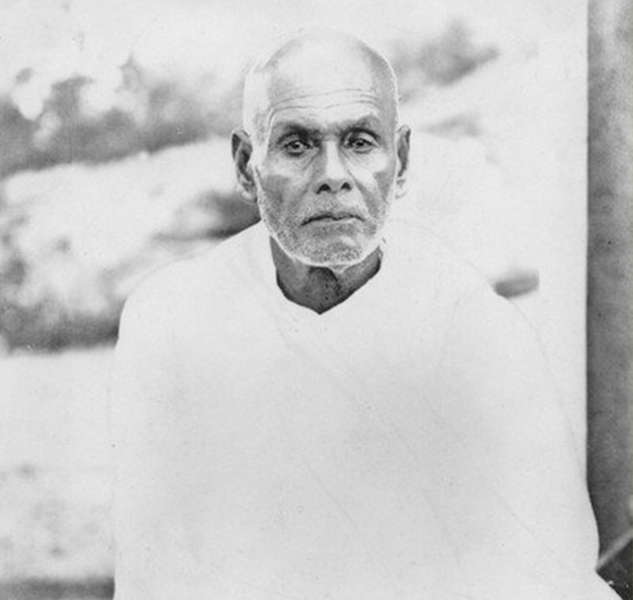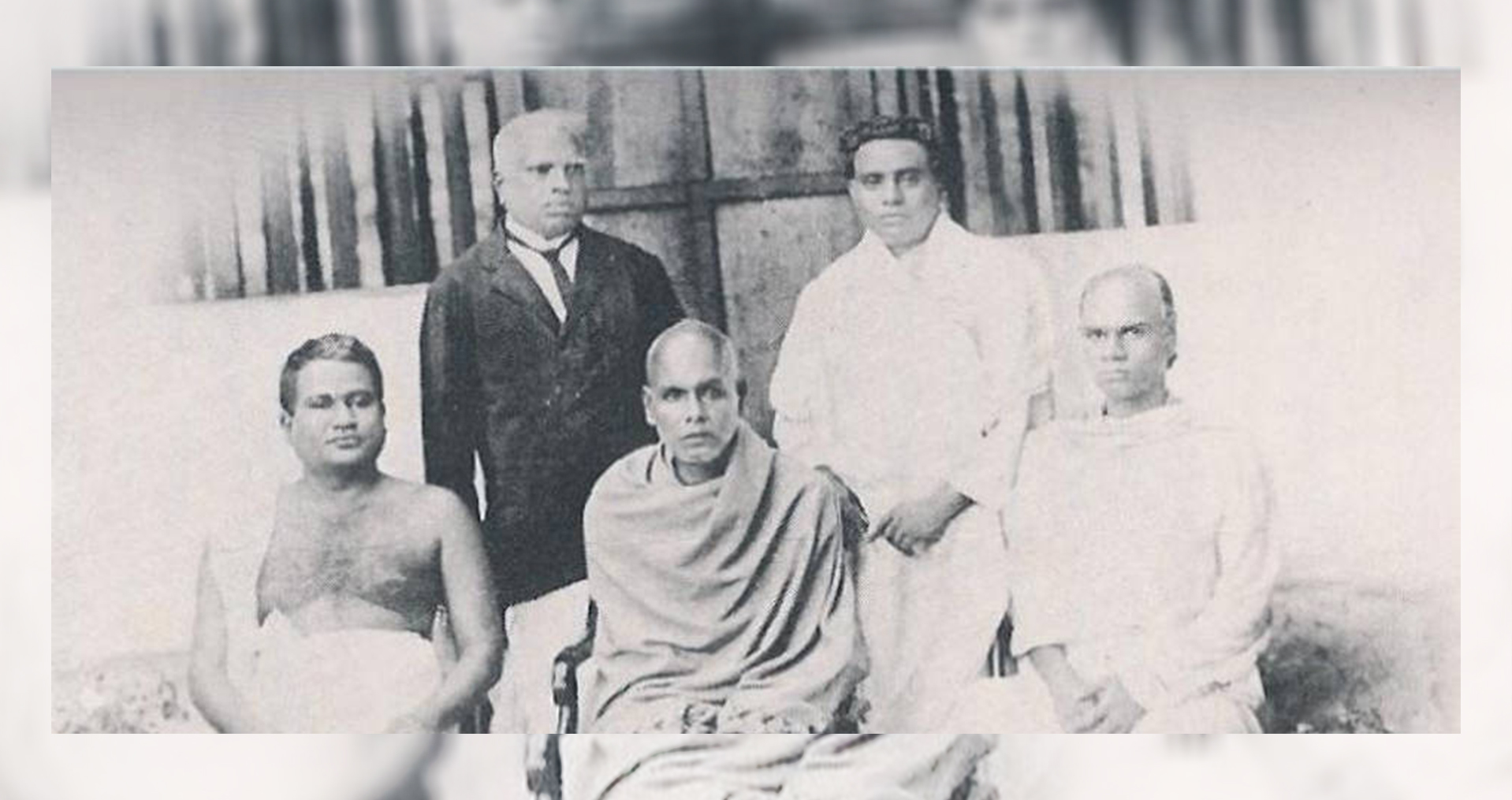NARAYANA GURU
The sage Narayana Guru was born in 1854 near the city of Trivandrum, which today forms part of the state of Kerala in the south of India.
It was there in his home village that he received a Sanskrit based, formal primary education. When elders noticed his ease and freedom with both the Sanskrit and Malayalam languages, and his exceptional talent for poetry, he was sent to receive a higher education under the tutelage of one Sanskrit scholar at Puthuppally, near Kayamkulam. This place is about sixty miles north of his native place.
From the beginning, Narayanan, as he was then known, showed the marked signs of one with a propensity for spirituality. While he was receiving a higher education in Sanskrit, the capability to express his inner vision began to attain maturity. But before completing this formal education, he fell seriously ill and had to return home. Thereafter he began to conduct a one-man Sanskrit school for the children of his home village for a time.
Then Narayanan began to travel throughout South India, and perhaps even into North India. He would begin to leave his native place like this for longer and longer spells, as he took up the life of an itinerant spiritual seeker. One day, without permission and in his absence, his family married him in proxy to a young woman. Yet he soon bid farewell to all of them, and left the family life forever. Thereafter he was fully devoted to the life of a wandering seeker.
Later he was found performing tapas (austere Self-enquiry) in a cave atop the high hill Maruthvamala near Kannyakumari, which sits at the southern tail end of the Western Ghats. It was here that he composed the Sivasatakam, a hymn of one-hundred verses praising Siva. Upon being noticed here, people began to approach him with their woes and problems, as people are often wont to do with spiritual men. Preferring solitude then, he quit that place and was later found undergoing tapas at the banks of the rapids of the River Neyyar. This place was a jungle area called Aruvippuram, about twelve miles southeast of Trivandrum. It is presumed that his thirst for spiritual wisdom was quenched when residing here, as evidenced in his poem Atmopadesa Satakam (One-Hundred Verses of Self-Instruction) composed there in those days. From sometime thereafter, we may call him Guru Narayana.

At Aruvippuram people also came to notice his presence and began to come to him with their problems as before. This time he met them with a mind to help. One of the common problems suffered among the general populace was the rigid and static casteism. Communal discrimination in religious and social matters was an ever present evil. Many people did not even have right to enter temples to worship or even to use public wells, let alone having the right to receive a formal education. Guru himself had been a victim of this latter mentioned social evil. But the Guru had a very different vision. His spiritual enlightenment gave him the open mindedness to see everyone as brethren in one Self. Therefore, his love for the Self flowed out as a love for all. This may be seen in the event in which he conducted the installation of a new temple that would be open for all, in that same place of Aruvippuram. And there, Guru also initiated a school for children that was open to all. These things happened in 1889, of which proved to catalyze a strong social movement. He would encourage the people to organize themselves on a basis in which discrimination had no place. An organization was indeed commenced, but it eventually came to only serve the same community the Guru himself had been born into. Although this body would become the largest communal organization in Kerala, its exclusiveness disappointed the Guru. As such, he then dissociated himself with it altogether.
Although many of the people who sought Guru’s help and wisdom were from the lower status of the caste-ridden society, his compassion was directed toward everyone living in ignorance. Many instances throughout his life demonstrated his freely given compassion toward persons of every background. Guru’s compassion also took the form of instructing people to give up many useless or outdated practices. He would advise people to give up holding meaningless social functions that only drained time and energy, and to do away with loathsome practices like animal sacrifice, instead directing them to purer forms of worship. Likewise, he would ask people to give up habits of drinking and of making and trading liquors. In all such wisdom based activities, we can see in Narayana Guru a sort of jnanin of action.
By this time disciples had also begun to gather around him seeking spiritual wisdom. One among them was Natarajan (later to become Nataraja Guru), who later received Narayana Guru’s blessing to found the Narayana Gurukula. Narayana Guru taught each disciple according to his own competence. On finding that Aruvippuram was becoming a busy place, Guru shifted to Varkala, where he founded a small ashram on a hillock that he named Sivagiri. As certain disciples resided there with him, Varkala became the radiant center of the Guru’s wisdom. There scholars would approach him on various spiritual matters; social workers would reach there seeking a wisdom-based social guidance; and ordinary people would come there seeking solutions for their mundane problems or to find cures for their diseases. Guru was also an unusually gifted Ayurvedic practitioner known for a miraculous healing touch of which he would help people. Later, after returning to Sivagiri at Varkala, Guru would come to be visited by both Mahatma Gandhi and the great poet Rabindranath Tagore.
In 1912 at Sivagiri he took the initiative himself to build a new and ideal temple of the goddess of wisdom. Meanwhile, demands came upon the Guru to commence more and more temples throughout Kerala and beyond. He complied with all of them. The number of temples thus installed by the Guru and his disciples rose to eighty.
When Sivagiri also became quite busy, he moved to a new abode in Aluva on the banks of the river Periyar. Here he built an ashram he would call Advaita Ashram, which was intended to be a center given to the study pure wisdom. In those days, as with today, a strong religious rivalry existed in Indian society. Yet as a jnanin, Guru could perceive that all religious teachings are unified by one essential content. In 1924 Guru would himself initiate a ‘‘Parliament of Religions” at Aluva, the first event of its kind in Asia. The immediate purpose of this event was for the participants to know and let be known the essential content of the various religions.
By this time the number of the Guru’s poetical works in the Sanskrit, Malayalam and Tamil languages had risen to sixty-two. The last of these composed was the Darsana-Mala (Garland of Visions), a Sanskrit work of one-hundred verses that shows how the inconceivable non-dual Reality could be intuitively and experientially perceived through the aid of ten different perspectives.
In 1928 he founded a body of sannyasin disciples to continue the wisdom tradition he initiated and care for all the ashrams and temples he had founded. The construction of the Sivagiri School in Varkala for children was also commenced, and was almost completed when Guru attained mahasamadhi in 1928.
